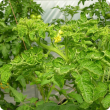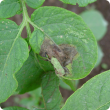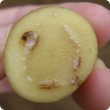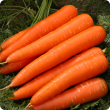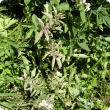Crops
The Department of Primary Industries and Regional Development continues to support the growth and international competitiveness of all crop industries in Western Australia.
With a 2400 kilometre span from its tropical north to its temperate south, WA supports a broad range of cropping industries from rain-fed winter cereals through to irrigated horticultural crops.
In the 2012/13 year the WA cropping industries exported a total of $3.9 billion which comprised: $3.1 billion of cereals, $859 million of pulses, pastures and oilseeds, $142 million of horticultural crops. The major contributors to these exports were wheat ($2.7 billion), canola ($756 million), barley ($377 million), lupins ($42 million), carrots at $48 million, oats ($12 million), and strawberries at $5.5 million.
Filter by search
Filter by topic
- (-) Remove Biosecurity filter Biosecurity
- Biosecurity & quarantine (36) Apply Biosecurity & quarantine filter
- Pests, weeds & diseases (36) Apply Pests, weeds & diseases filter
- (-) Remove Diseases filter Diseases
- Horticulture (35) Apply Horticulture filter
- Plant biosecurity (34) Apply Plant biosecurity filter
- Fruit (18) Apply Fruit filter
- Vegetables (15) Apply Vegetables filter
- Fungi (15) Apply Fungi filter
- Potatoes (10) Apply Potatoes filter
- Citrus (9) Apply Citrus filter
- Nursery & cutflowers (8) Apply Nursery & cutflowers filter
- Tomatoes (7) Apply Tomatoes filter
- Viruses & virus-like (6) Apply Viruses & virus-like filter
- Crop diseases (5) Apply Crop diseases filter
- Bacteria (5) Apply Bacteria filter
- Pests (4) Apply Pests filter
- Bananas (4) Apply Bananas filter
- Quarantine (3) Apply Quarantine filter
- Onions (3) Apply Onions filter
- Minor fruits (3) Apply Minor fruits filter
- Stone fruit (2) Apply Stone fruit filter
- Irrigated crops (2) Apply Irrigated crops filter
- Pastures (2) Apply Pastures filter
- Capsicums and chillies (2) Apply Capsicums and chillies filter
- Garlic (2) Apply Garlic filter
- Importing to Western Australia (2) Apply Importing to Western Australia filter
- Postharvest (1) Apply Postharvest filter
- Weeds (1) Apply Weeds filter
- Pasture management (1) Apply Pasture management filter
- Production & postharvest (1) Apply Production & postharvest filter
- Importing plant and plant products (1) Apply Importing plant and plant products filter
- Beans (1) Apply Beans filter
- Grains (1) Apply Grains filter
- Leeks (1) Apply Leeks filter






